As housing professionals, it always amazes us how many house types and styles there are to choose from. Each has its pros and cons as well as a type of client that it attracts.
- Interested to see which are the most popular styles and types of houses?
- Want some professional tips on incorporating those styles into your future projects?
In this 7-minute read, we’ll shed some light on the distinguishing features of each house type. Whether you’re an architect, designer, or real estate professional, understanding these key differences can help you better serve your clients and bring their ideas to life!
Let’s start with the most common types of home structures.
The Most Common Types of Home Structures
Check out 5 of the most common types of homes.
Apartment
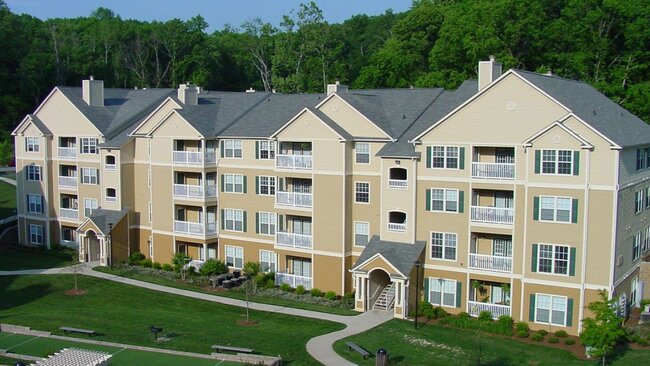
Main Characteristics of This Type
- Design and Layout: Apartments are characterized by their compact design, sharing walls with neighboring units. This makes efficient use of space a priority.
- Amenities and Community Living: They often come with shared amenities like pools, gyms, and communal gardens.
- Location: Typically located in urban areas, offering easy access to city amenities.
Best For:
- Urban Dwellers: Ideal for individuals or families looking for a home in the heart of the city.
- First-time Homebuyers: A practical choice for those entering the real estate market.
- Investors: With the urbanization trend, apartments remain a popular investment choice.
Condo
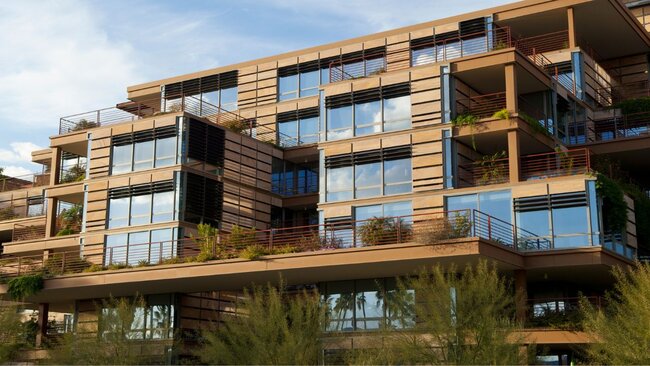
Main Characteristics of This Type
- Ownership and Maintenance: Unlike apartments, condo owners hold the title to their individual units while sharing common areas.
- Community Rules: Condos are governed by homeowners’ associations (HOAs) which set rules and manage maintenance.
- Amenities: They often offer enhanced amenities like fitness centers, pools, and security services.
Best For:
- Homebuyers Seeking Amenities: Ideal for those who value on-site amenities without the hassle of maintenance.
- Community-Oriented Individuals: Perfect for people who enjoy a sense of community and shared living spaces.
Single-Family Home
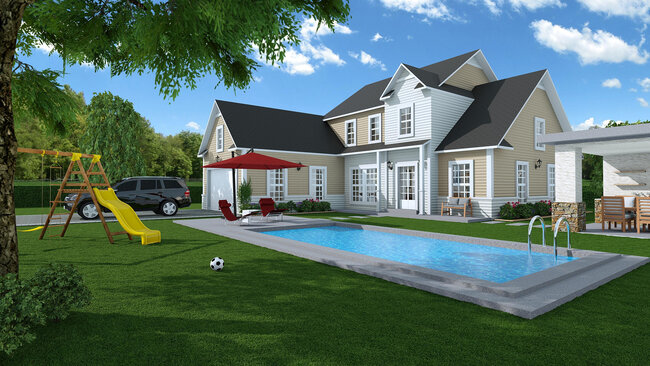
Main Characteristics of This Type
- Privacy and Space: Offers more privacy with no shared walls and typically comes with a private yard.
- Customization and Flexibility: Owners have greater freedom to customize their home and landscape.
- Variety of Styles: Available in a wide range of architectural styles to suit your clients’ personal tastes.
Best For:
- Families: Offers the space and privacy that families often need.
- Long-Term Homeowners: Ideal for those looking to put down roots and customize their living space.
Tiny House
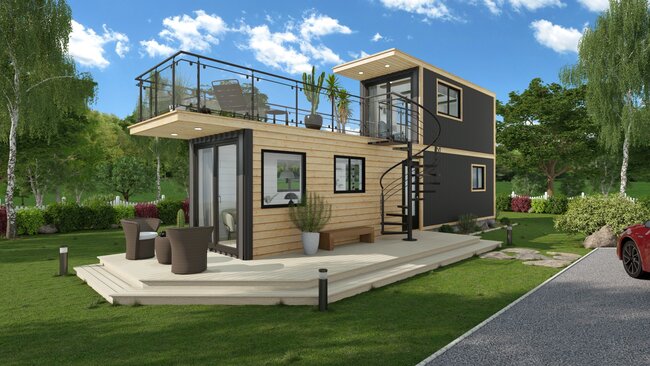
Main Characteristics of This Type
- Compact Living: Emphasizes living minimally in a small and efficiently designed space that is often on wheels.
- Sustainability: Typically features eco-friendly practices and materials.
- Affordability: This type of home is a cost-effective alternative to traditional homeownership.
Best For:
- Eco-Conscious Individuals: Those looking to reduce their carbon footprint.
- Minimalists: Perfect for people who embrace a minimalist lifestyle and the freedom to live simply.
Townhome
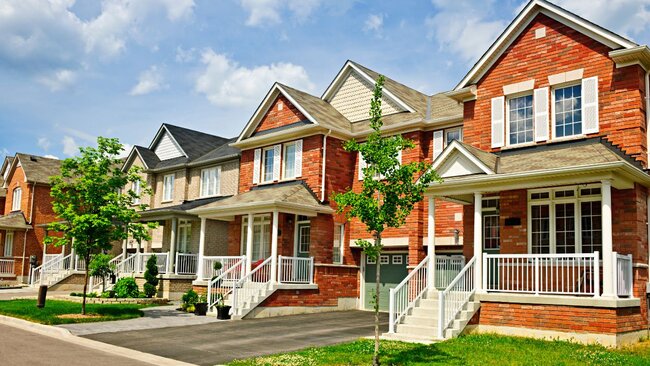
Main Characteristics of This Type
- Shared Walls: Townhomes are multi-floor homes sharing one or two walls with adjacent properties. But each home has its own private entrance.
- Community Living: Often part of a community with shared amenities and some maintenance managed by an HOA.
- Balance of Privacy and Community: This home type offers a middle ground between single-family homes and condos.
Best For:
- First-Time Homebuyers: An accessible entry point into homeownership.
- Busy Professionals: Ideal for those seeking a balance of home ownership with convenience and low maintenance.
*It can be challenging to find the right home design program to accommodate a variety of house types. If you go with Contemporary Style Design, you won’t have to worry about that. Sign up for the FREE version today and Discover how Contemporary Style Design can elevate your projects, no matter the house type. Contemporary Style Design’s intuitive design software empowers you to bring any home style to life effortlessly, from sleek apartments to spacious single-family homes. Start designing with Contemporary Style Design today.
Popular House Styles for Everyone
Now let’s look at 9 different house styles. For each, you’ll get the defining characteristics of that style along with a few tips for implementing it in your home designs.
Mid-Century Modern
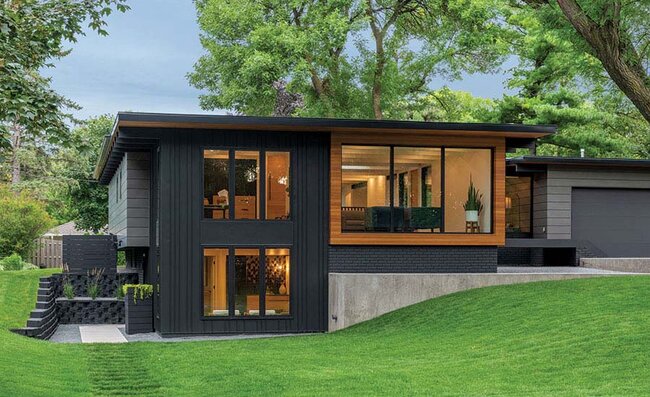
Photo © Spacecrafting
Defining Elements of This Style
- Clean lines, organic forms, and minimal fuss.
- Emphasis on bringing the outdoors in through large windows and open spaces.
- Uses a mix of traditional materials like wood with non-traditional materials such as metal and glass.
Integrating this Style in Your Project Design
- Focus on simplicity and integration with nature when designing.
- Incorporate open floor plans and large windows to capture the essence of this style.
- Select furniture and decor that echo the era’s charm to blend both modern and vintage.
Farmhouse
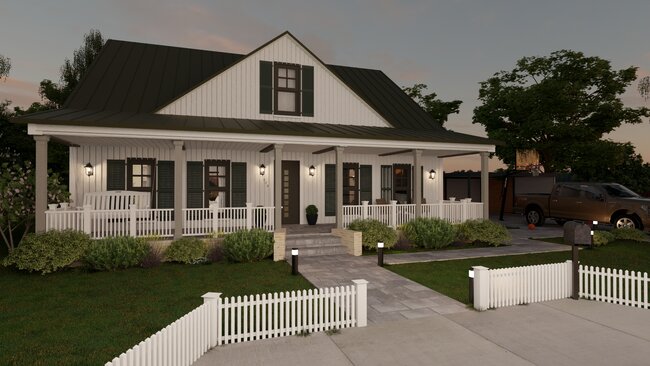
Defining Elements of This Style
- Features a practical, rustic aesthetic with a focus on comfort and functionality.
- You’ll commonly see large, wrap-around porches, wood siding, and spacious kitchens.
- This house style often incorporates natural materials and a neutral color palette.
Integrating this Style in Your Project Design
- Design with an emphasis on creating cozy, inviting spaces.
- Use natural wood finishes, stone accents, and traditional patterns.
- Ensure the layout can accommodate gatherings, with a large kitchen and open living areas.
Craftsman

Defining Elements of This Style
- This style of home is known for its handcrafted feel, attention to detail, and use of natural materials.
- Features low-pitched roof lines, wide eaves, and exposed wooden structural elements.
- Interior spaces are warm and inviting, with built-in furniture and rich woodwork.
Integrating this Style in Your Project Design
- Highlight craftsmanship through custom cabinetry, built-ins, and woodwork.
- Choose materials that age well and add character over time.
- Plan for a functional, yet beautiful, layout that respects the style’s heritage.
Mediterranean
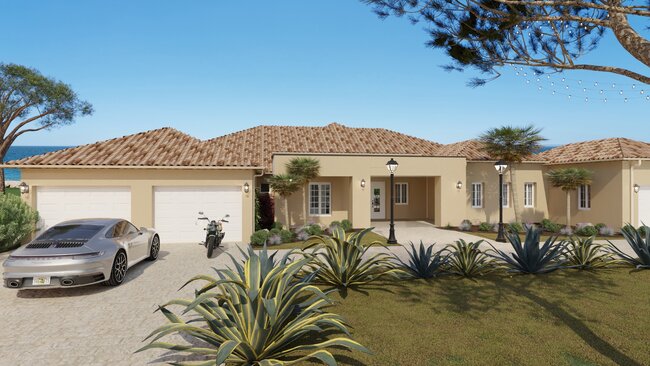
Defining Elements of This Style
- Inspired by the homes of the Mediterranean coast, this style of home features stucco walls, red tile roofs, and plenty of arches.
- Bright, airy interiors with cool tile floors and a warm color palette.
- Landscaping often includes terraces, fountains, and lush gardens.
Integrating this Style in Your Project Design
- Emphasize outdoor living spaces with patios, courtyards, and elaborate gardens.
- Incorporate architectural elements like arched doorways, wrought iron fixtures, and mosaic tiles.
- Design with an open, flowing interior layout to complement the style’s airy feel.
Ranch
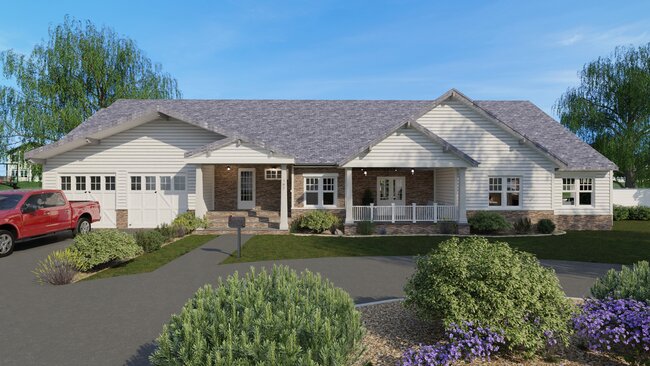
Defining Elements of This Style
- This style is characterized by its single-story layout, open-concept living areas, and large windows.
- Often features an attached garage, sliding glass doors, and a wide, horizontal profile.
- Embraces a connection with the outdoors by usually including offering patios and expansive yards.
Integrating this Style in Your Project Design
- Prioritize single-level living with an emphasis on accessibility and flow between indoor and outdoor spaces.
- Incorporate large windows and sliding doors to enhance natural light and outdoor access.
- Design with simplicity and functionality in mind.
Federal
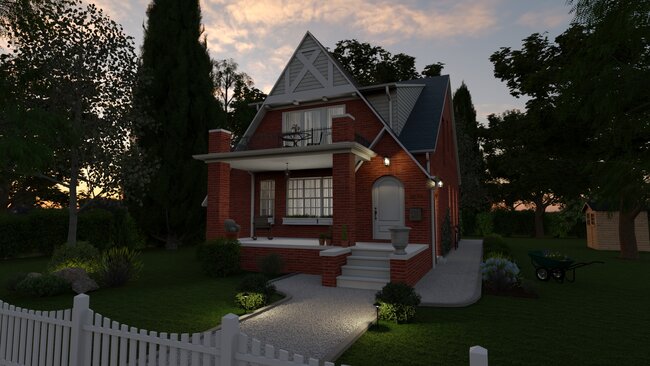
Defining Elements of This Style
- Symmetrical design, classical detailing, and use of brick or wood facades.
- Features tall, narrow windows, often with decorative crowns, and a centered entrance.
- Interior spaces are formal and elegant, with an emphasis on proportion and balance.
Integrating this Style in Your Project Design
- Emphasize symmetry and classic proportions in the design layout.
- Incorporate refined architectural details like decorative moldings and elegant staircases.
- Use a palette of classic colors and materials to capture the style’s dignified aesthetic.
Colonial
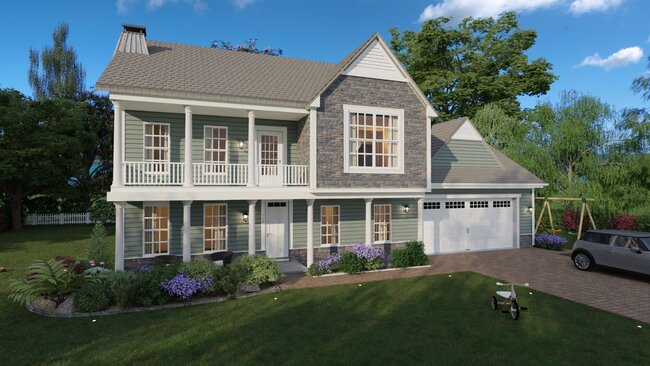
Defining Elements of This Style
- These homes are known for their symmetrical facades, central entries, and evenly spaced windows.
- Traditionally two stories, with living spaces on the first floor and bedrooms above.
- Features a rectangular shape, gabled roof, and brick or wood-style siding.
Integrating this Style in Your Project Design
- Maintain the style’s symmetry and classic proportions in your designs.
- Design interiors that reflect the style’s practicality, with a clear distinction between public and private spaces.
- Utilize traditional materials and color schemes to enhance the colonial charm.
Capecod
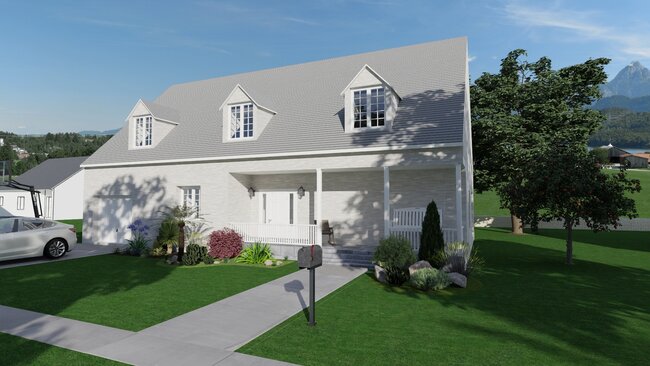
Defining Elements of This Style
- Features a steep roof, symmetrical appearance, and central chimney.
- This style usually has simple, unadorned facades, with shuttered windows for a cozy look.
- Compact and efficient, these homes often include dormers for added space and light.
Integrating this Style in Your Project Design
- Focus on creating cozy, efficient layouts that maximize space and light.
- Incorporate traditional elements like wood siding, shutters, and a central fireplace.
- Design with an emphasis on warmth and simplicity that reflect this style’s New England roots.
Container Home

Defining Elements of This Style
- Constructed from shipping containers, these homes stand out for their modular, industrial aesthetic.
- They offer a versatile and sustainable approach to design by repurposing materials in innovative ways.
- Often features a compact, efficient layout that maximizes the use of small spaces and incorporates eco-friendly practices like solar energy and water conservation.
Integrating this Style in Your Project Design
- Embrace the modular nature of containers to create customizable and scalable designs.
- Focus on sustainability by incorporating eco-friendly materials and energy-efficient systems.
- Leverage the industrial look by combining both raw and refined finishes for a modern, minimalist aesthetic.
Conclusion
Exploring the diverse world of house types and styles opens up a realm of possibilities for architects, designers, and real estate professionals. From the compact efficiency of tiny houses and container homes to the sprawling luxury of Mediterranean and ranch styles, understanding these options helps you better serve your clients and bring their vision to life.
Contemporary Style Design is the perfect partner for planning your projects. With its intuitive design software, you can:
- Visualize projects with stunning 3D renderings.
- Streamline the design process with easy-to-use tools.
- Enhance client presentations and close deals faster!
Whether you’re drafting a cozy Cape Cod cottage or planning a modern mid-century masterpiece, Contemporary Style Design makes it easier than ever to turn your ideas into reality.
Try the FREE version today and see what it can do for your business!




